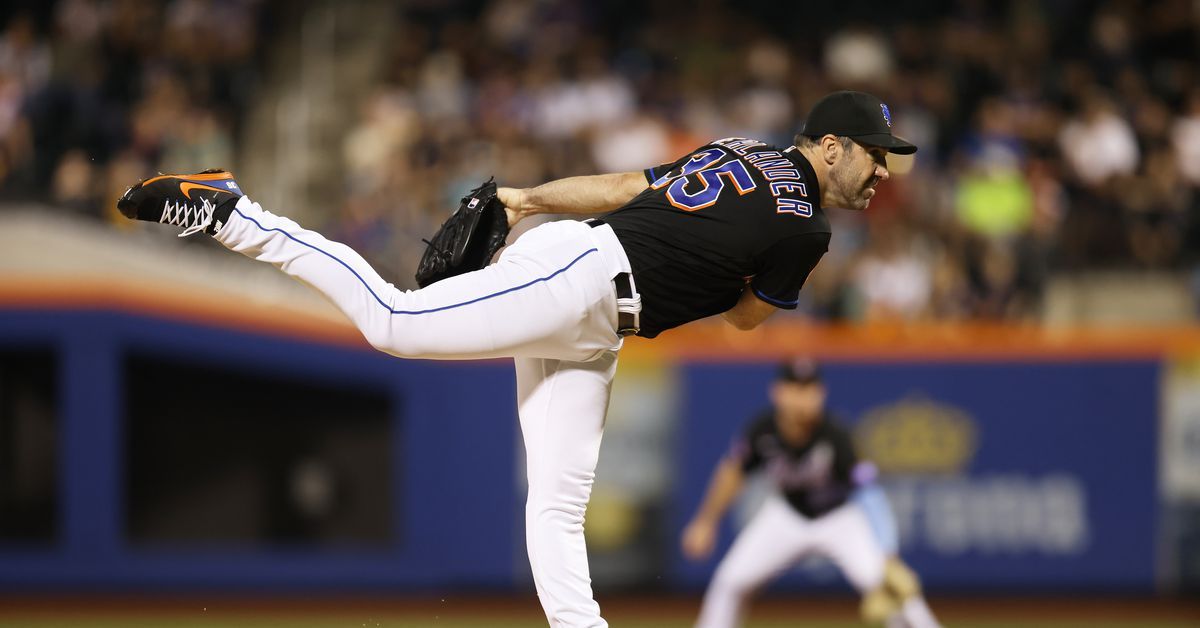Breaking down New York Mets starter Justin Verlander
After not making his season debut until May 4th due to an injury, New York Mets starter Justin Verlander has had an up and down start to the season. In two of his outings the future Hall of Famer has gone five innings allowing six runs, however, in his other four starts, he has allowed two or fewer runs each time. Poor games like the two against the Tampa Bay Rays and Colorado Rockies might be nothing more than outliers. But they also may point to inconsistencies that Verlander is developing at the age of 40. As a result, it is difficult to predict which version of Verlander the Atlanta Braves are going to face this week, but we will look into what he throws and if there is any indicator as to if his stuff has fallen off.
Pitch #1 - Four seam - 2023 usage rate - 52.2 percent
2023 stats - .257 xBA, .520 xSLG, .357 xwOBA
Average velo - 94.3 MPH - Spin rate - 2,410 RPM - vertical movement - 12.5 inches - horizontal movement - 8.0 inches
After possessing one of the league’s premier power four seamers, Verlander still throws an effective one, but not one that is going to overpower hitters like it did with the Detroit Tigers and Houston Astros. If the season were to end today his 16.7 percent whiff rate with it is the lower it has been in a season since 2014, where it finished at 15.5 percent. In addition to that, since 2015, when Statcast numbers were first being tracked, the average exit velocity against of 91.9 MPH would be the second highest mark in that time frame and the xwOBA would be the highest tally of his career by .015 points. The biggest reason his four seamer has fallen off this season is the hard-hit rate (batted balls put in play at 95+ MPH) has gone from 40.3 percent last season to 46.7 percent this season. Additionally, the ground ball rate has fallen from 32.5 percent to 25 percent.
Pitch #2 - Slider - 2023 usage rate - 28.8 percent
2023 stats - .173 xBA, .224 xSLG, .207 xwOBA
Average velo - 87.2 MPH - Spin rate - 2,481 RPM - vertical movement - 32.3 inches - horizontal movement - 4.6 inches
The expected metrics against this pitch are still more than solid, but overall this pitch has taken a step back this season for the former three time CY Young winner. The most noticeable drop off for the slider is the fact the whiff ate against it has dropped 6.8 percent this season to 27.9 percent. In addition to that the chase rate is down to 31.3 percent, a 3.2 percent decrease and the in zone whiff rate has dipped all the way down to 16.4 percent, an 8.5 percent decrease from last season. The one saving grace for Verlander on this pitch this season is that it carries a ground ball rate of 53.6 percent, the highest it has ever been. Even if batters are putting the ball in play against it more, ground balls are never going to produce sky high expected metrics.
Pitch #3 - Curveball - 2023 usage rate - 16.1 percent
2023 stats - .290 xBA, .480 xSLG, .345 xwOBA
Average velo - 79.2 MPH - Spin rate - 2,700 RPM - vertical movement - 55.0 inches - horizontal movement - 6.3 inches
There is a theme here as the quality of Verlander’s curveball has also fallen off. Like his slider the whiff, chase and in zone whiff rates are all down this season compared to last. When Verlander is ahead in the count the usage rate sees a slight uptick going to 19.4 percent, but when behind in the count, the right hander almost removes it from his arsenal throwing it just 8.8 percent of the time. After being his second most used pitch to left handed batters last season at 22.9 percent, Verlander is only throwing his curve to them 14.7 percent of the time this year, the third highest number amongst his pitches.
Did not include his changeup which he has only thrown 17 times this season, all to lefties.
Key matchup - Ronald Acuna Jr. - This is a matchup of power vs power. As discussed above, Verlander has a heavy reliance on his four seam fastball which is a pitch that Acuna Jr. has an xBA of .376 and xwOBA of .498 against this season in addition to a 97.0 MPH average exit velo. As a result, Verlander is either going to have to adjust his approach, something he does not do often, or say my fastball is better than you and attack early and often with it, which I expect him to do. I think Acuna Jr. gets the better of Verlander because of that approach picking up two hits off of Verlander with one being a homer.
Source: Battery Power


